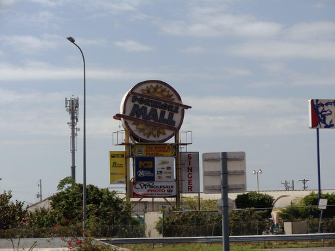Portmore, the sunshine city with its nearly 103,000 population, has garnered unprecedented attention from the two leading political parties in recent weeks. This, as the country prepares for a long-overdue local government election and a general election that will determine if the Jamaica Labour Party (JLP) enjoys a third term in power.
The top brass of the ruling party has made several treks to the dormitory city with goodies and promises. Prime Minister Andrew Holness recently broke ground for the redevelopment of a dust bowl at Lot 26 at the Portmore Town Centre into a “resilience park”. After years of being promised a climate change park and witnessing the ground being broken from 2015, for the well-needed recreational space, Holness recently unveiled the plan for a lavish set-up for the 21.5 acres property at a cost of $4.4 billion over the next 18 months. The next general election is constitutionally due in 2025.


“This park in particular has been the subject of many starts and stops. Thankfully, none under me. I find myself having to divide my time into completing what others started but did not finish, in addition to carrying through the things that I have started,” said the Prime Minister, who didn’t miss an opportunity to throw jabs at his political opponents.
The opposition People’s National Party (PNP), which currently commands the leadership of the Portmore Municipal Corporation, has made it clear that it has no intention of handing over the densely populated municipality to the JLP. Already, there are accusations of despotism, and representatives from both sides of the political divide have engaged in verbal spats publicly over sections of Portmore, suggesting that the power struggle is likely to intensify in the coming months.
During the handing over of a three-bedroom house under the New Social Housing Programme in Casabanna, Clifton, St Catherine in December, Holness and St Catherine South Member of Parliament Fitz Jackson traded words as Jackson accused the Holness administration of trying to establish a parish without the input of the Electoral Office of Jamaica and, as a result, cutting off voters from his constituency.
“There is a document submitted by the Ministry of Local Government with boundary proposal unilaterally determined. And what that proposal would do is to establish a parish that cuts off parts of two constituencies; mine is one and Minister Terrelonge represents a part… areas that I represent will have no Member of Parliament,” Jackson said.
He described the move as a retrograde step that will ensure the JLP has dominance over those areas. Holness has downplayed the concerns, but since that public spat, the PNP has sharpened its focus on Portmore through the appointment of Jackson as Opposition’s spokesperson on matters relating to Portmore. Prior to this, Jackson served as opposition spokesman on areas such as finance and national security.


Speaking at a service at the Portmore Moravian Church last Sunday, Holness said his administration’s desire to convert Portmore into Jamaica’s 15th parish is not a political gimmick, but Jackson has hit back through the media, declaring that the statement is a gimmick in itself. Making Portmore, the country’s 15th parish was a political promise by former JLP Prime Minister Bruce Golding on the campaign trail in 2007.
“I am announcing that it is going to be in our manifesto that, once we become the government, we are going to amend the Counties and Parishes Act to declare Portmore as the 15th parish of Jamaica and to separate it from the rest of St. Catherine,” Golding said at the time.
As the tussle for Portmore intensifies, the play for key constituencies in the municipality is also under the microscope. One such is St. Catherine South East, which was wrestled by the JLP Robert Miller during the 2020 general election, breaking a 27-year dominance by the PNP.
After a contentious leadership struggle with deputy mayor for Portmore, Alric Campbell, medical doctor Alfred Dawes was chosen by PNP president Mark Golding to be the party’s standard-bearer for the constituency in the next general election. The constituency includes communities such as Waterford, Cumberland, Bridgeport, Edgewater and Independence City, where a wide cross-section of young professionals reside. Both political parties have recognised the need to galvanise the youth population to secure a win in the upcoming election.

